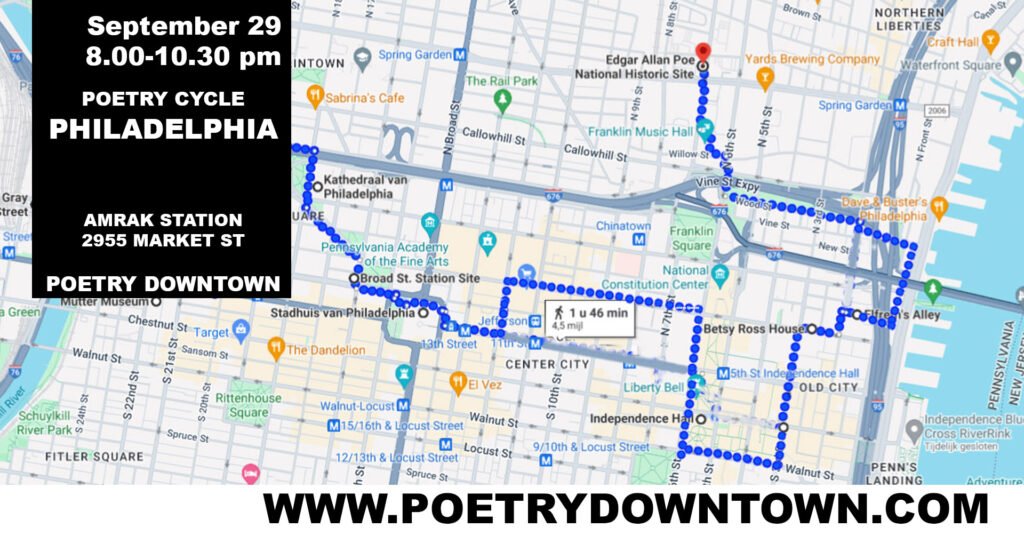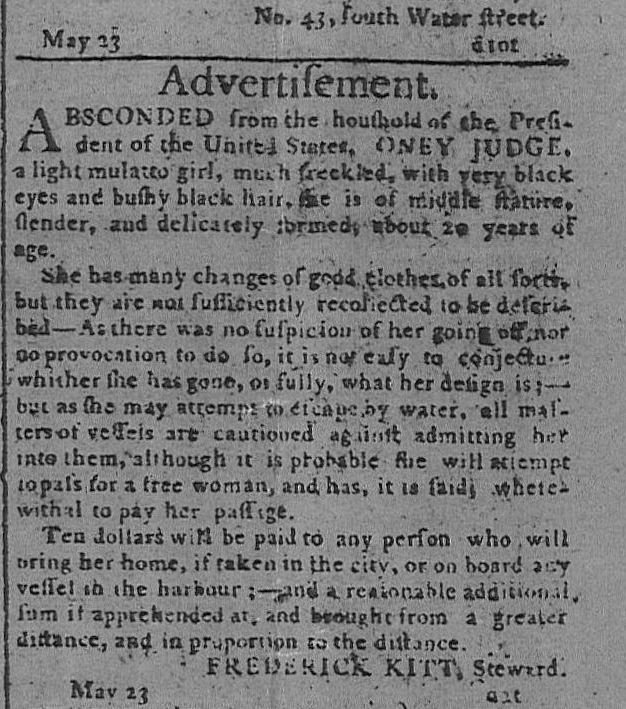September 29 9.00 – 11.30 am ![]() |
| ![]()
North Waiting Room at William H. Gray III – 30th Street Station at 2955 Market St
Sponsored by WalkableCities.com
Price: free (excluding Indego Bike, rental or your own bicycle)

After a brief poetry reading in front of the old Broad Street Station frieze “The Spirit of Transportation,” which depicts travel from ancient to futuristic times, we cross the Schuylkill River via the Market Street Bridge. From 1673 till 1775 first a ferry connected both sides of the river. At the beginning of the Revolutionary War, American General Israel Putnam replace the ferry with a pontoon bridge and in 1801 the first wooden bridge across the Schuylkill was build by Timothy Palmer (1751–1821). He was the best-known wooden bridge builder in the country. Edgar Allan Poe wrote a beautifull love story called ‘Morning on the Wissahiccon’ about the Wissahickon Creek that runs into the Schuylkill just five miles North.
Once across the river, we make a quick stop to see German theoretical physicist Albert Einstein brains at the Mütter Museum. On April 18, 1955, Dr. Thomas Harvey (the pathologist in Princeton) “stole” Einstein’s brain along with his eyeballs and a few days later, he cutted Einstein brains into 46 ultra-thin microscope slides in a lab at the University of Pennsylvania. In two letters written in German to American Poe collector Richard Gimbel (Philadelphia), Einstein described Poe’s work as “eine sehr schöne Leistung eines ungewöhnlich selbständigen Geistes” (‘a very beautiful achievement of an extraordinary independent mind’). He also referred to Poe as ‘a master,’ ‘a wonderful man,’ and ‘a creative son of America.’
From the museum, we head to the Rare Book Department at the Free Library, where we can read Einstein’s letters and view the taxidermied remains of Charles Dickens’ pet raven, which inspired one of Edgar Allan Poe’s most famous poems, “The Raven.” Dickens visited Philadelphia four times and gave eight readings at Concert Hall at Crestnut Street (Demolished). There’s even a statue of Dickens and Little Nell in Clark Park in the Spruce Hill neighborhood.
Next, we cycle to Arch Street, where Edgar Allan Poe rented a room, and then to the Cathedral Basilica of Saints Peter and Paul, constructed between 1846 and its opening on November 27, 1864. Interestingly, construction of the cathedral began the same year Poe’s “The Raven” was first published in the Philadelphia Saturday Courier (July 25, 1846). The construction of the cathedral took 18 years, according to the Alexandria Gazette at the time, it was expected to be completed in just five years.
After the cathedral, we stop by the former location of Broad Street Station (1881-1952) before visiting the Philadelphia City Hall. It’s the largest municipal building in the U.S., with over 14 acres of floor space, and has been designated a National Historic Landmark. Built in the 1890s, City Hall was intended to be the tallest building in the world but was soon surpassed by the Washington Monument and the Eiffel Tower. During our visit, we will ascend to the top of City Hall Tower for a panoramic view of Philadelphia.
After leaving City Hall, we cycle back to Arch Street. Along the way, we pass the Reading Terminal Market, home to over 70 family-owned small businesses. Established in 1893, it is Philadelphia’s oldest continuously operating public market. On Arch Street, we pass the African American Museum, with the city’s detention center located across the street. At the site of the detention center, remnants of a Lenape Native American settlement were discovered. The Lenape lived in the area before the arrival of Swedish colonists in the 17th century. The Swedish settlers, who called their colony New Sweden from 1638 to 1655, left a lasting legacy, which is reflected in ao the Swedish colors of Philadelphia’s flag.
Just before reaching the Liberty Bell, you’ll find the site of the old President’s House, which once served as the nation’s capital residence. It was here that George Washington lived after becoming president, along with Ona “Oney” Judge Staines (1773 – 1848), an enslaved woman. In her early twenties, Ona Judge escaped from the President’s House, becoming a fugitive slave. Despite the Washington family’s relentless efforts to recapture her, including placing a bounty of $10 (equivalent to about $240 in 2024), she remained free. This bounty was advertised in The Pennsylvania Gazette on May 24, 1796. That was 16 years after the state Pennsylvania accepted the first gradual abolition act.

Following this, we proceed to Independence Hall and the Liberty Bell. Independence Hall, opened in 1753, is where both the Declaration of Independence and the U.S. Constitution were signed. From there, we will cycle to the Washington Square. Three centuries ago where both free and enslaved Africans, gathered during holidays and fairs to celebrate traditions of their homelands. The square also served as a burial ground (known at the time as a potter’s field) for the city’s early Black population, including many victims of the 1793 Yellow Fever epidemic.
After the former potter’s field we stop in front of Anthony Benezet (1713 – 1784) demolished house. During the Great Awakening of the 1750s, Philadelpha Quaker Anthony Benezet and his colleague John Woolman challenged slaveholding among their peers and argued that enslaved African Americans should be educated in preparation for eventual freedom. Until his death in 1784, Anthony Benezet remained a staunch anti-slavery advocate, writing numerous pamphlets and running a night school for the black community for nearly 20 years. Pennsylvania had passed the first gradual abolition act in 1780 and became the city of hope for African Americans.
After Anthony Benezet’s House we cycle to the Betsy Ross House, purportedly where seamstress and flag-maker Betsy Ross (1752–1836) lived when she sewed the first American flag. Next is Elfreth’s Alley, one of the oldest continuously inhabited residential streets in the United States, dating back to 1703. It features an exceptional collection of early American structures built between 1720 and 1836.
After exploring our penultimate stop Elfreth’s Alley, we take a short cycle via Wood Street Steps to the final destination the Edgar Allan Poe National Historic Site. The Wood Street Steps are the last remnant of a series of public staircases mandated by William Penn to ensure public access to the waterfront through a compromise with landowners in 1694. The steps are a symbol of the tremendous city planning history in Philadelphia, as well as a reminder that the Delaware River’s bank once reached Water St. at this location.
After exploring our penultimate stop Elfreth’s Alley, we take a short cycle via Wood Street Steps to the final destination the Edgar Allan Poe National Historic Site. The Wood Street Steps are the last remnant of a series of public staircases mandated by William Penn to ensure public access to the waterfront through a compromise with landowners in 1694. The steps are a symbol of the tremendous city planning history in Philadelphia, as well as a reminder that the Delaware River’s bank once reached Water St. at this location.
Final stop is the Edgar Allan Poe National Historic Site. The Poe family rented this house from 1842 or 1843 till April 1844. In 1980, Congress designated the site as a national memorial to Edgar Allan Poe. The house is currently unfurnished, with visitors walking through empty rooms where the paint is peeling from the walls. Poe’s years in Philadelphia were among his most productive, during which he wrote 30 of his short stories, including the now-classic “The Fall of the House of Usher.”
After the Edgar Allan Poe NHS we cycle via the Philadelphia Museum of Art back to the trainstation.
